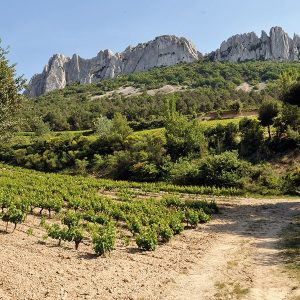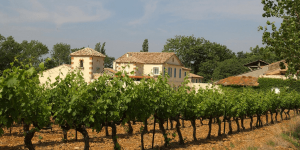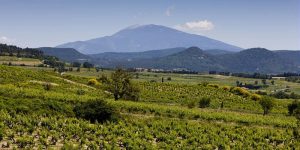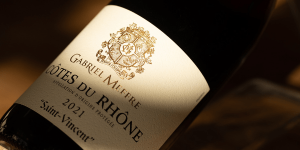A grape that loves the sun and rain!
In France, Mourvèdre is mainly grown in the Rhône Valley, in Languedoc and in Bandol in Provence.
Anthony Taylor, Brand Ambassador for Gabriel Meffre, explains:
Most red wines in the Bandol appellation are made with Mourvèdre. The vines are planted right on the coast and watered by incoming sea mists. This tempers Mourvèdre’s wilder side, and brings the grapes to beautifully balanced ripeness.”
Mourvèdre’s relatively irregular fertility means that its yield is small to prevent its stumps from becoming too quickly exhausted. The quantity of berries can triple from one year to another. It’s a highly fickle grape variety that is prone to all the major viticultural diseases.
Véronique Torcolacci, Purchasing & Wine Quality Director for Gabriel Meffre, says:
“It’s the grape variety we harvest last. It needs moisture to fully express itself, so we always pick in the morning, when there’s a drop of dew to harvest it. This year, it was in early October.”
Organoleptic identity
Mourvèdre releases black fruit aromas like blackberries and occasional notes of cinnamon or black pepper. “Mourvèdre is packed with spice and has a slightly wild side similar to leather. It can also have smoked fruit notes. This is due to the tannins it contains,” specifies Anthony.
The third biggest grape variety in the Valley, Mourvèdre produces powerful wines with a typically dark hue. While there are wines made entirely with Mourvèdre, it is more commonly found in blends alongside Grenache, Syrah, Cinsault and Carignan.
It is added to make a wine more complex and inject its empyreumatic (burnt) character.
“Syrah brings acidity and blue fruits (plums and liquorice)strawberry and the rich, dense flavours of cherry for Grenache, while Mourvèdre has a tannic structure, a mighty and rather spicy dimension,” explains Véronique.
Mourvèdre’s place at Gabriel Meffre
Gabriel Meffre grows Mourvèdre at Domaine de Longue Toque. In our Gigondas, it accounts for 9% of the 2016 blend. Véronique tells us:
Véronique explains:
“We have one hectare of Mourvèdre planted in our Gigondas vineyards. In 2016, it reached an especially high level of quality. So we decided to add the blend to that year’s vintage to give the wine an additional layer of complexity. In 2017, however, we thought it was best to leave it out because it hadn’t ripened sufficiently well.”
The grape variety is also found in other winery’s flagship cuvées like its Côte du Rhône Villages Laurus, or, in the “Gabriel Meffre” range: Cairanne “Saint Jean” Organic, Rasteau “Saint Didier” and Côtes du Rhône Plan de Dieu “Saint Mapalis”, etc..
“The percentage of Mourvèdre in our blends really depends on the weather conditions of the year. This excellent grape is tough to grow. The stability of our wines is a priority for our winery. We pay close attention on our Mourvèdre to check it reaches perfect ripeness,” says Anthony.
Offering tobacco, quince and occasional leather notes, Mourvèdre imparts its powerful and elegant character to wines from the southern Rhône Valley. At once understated and quintessential, it brings a unique quality to Gabriel Meffre wines!
Rubrics
Découvrez plus d'articles...
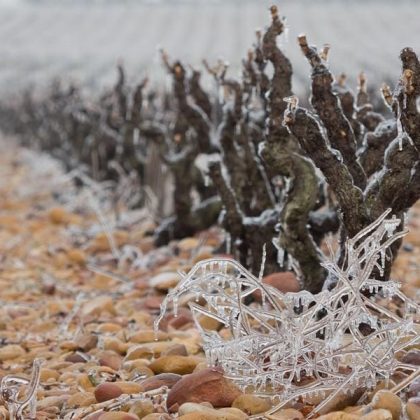
The vineyard and wine cellar in winter
What happens in the world of wine during the winter period? After the hustle and bustle of autumn, the harvests and vinification process, comes winter, a season devoted to maturation and looking after the vines.

In 2018, we will continue to strive to be a Responsible Company!
In this new year, our wish to help build a world that respects both mankind and the environment is as strong as ever. This can be seen through the number of our projects for 2018 that are closely related to our convictions as a Responsible Winery. We’re delighted to be given the opportunity to tell you about them!
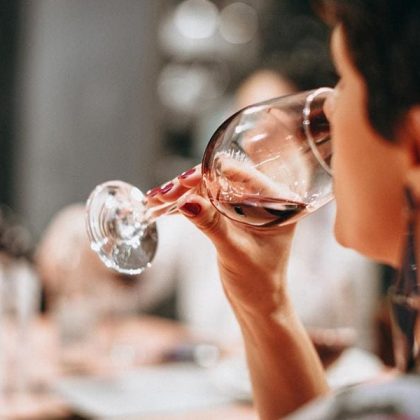
Discovering the art of pairing wine and chocolate
A morsel of white chocolate, Black Forest gâteau, pieces of stem ginger wrapped in chocolate, or Mexican chicken in chocolate sauce—all very appetising, but which wine would you serve with each one? Food and wine pairings factor in a combination of elements, such as the terroir, our powers of concentration, the circumstances of the tasting session, our sense memory and more. We guide you through some of the basic principles of this fascinating world!
